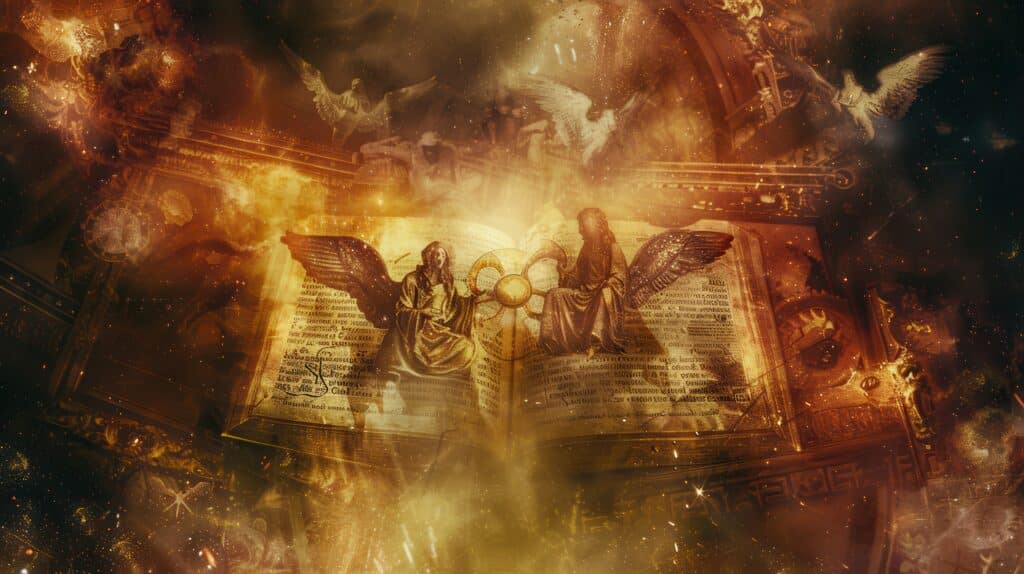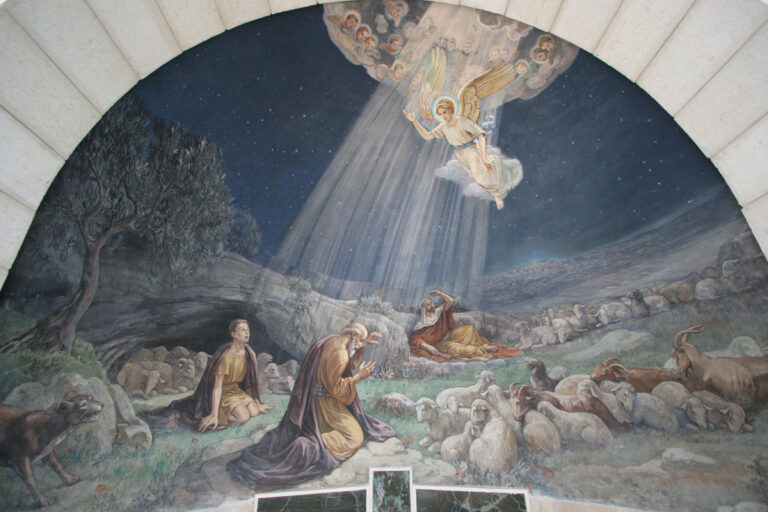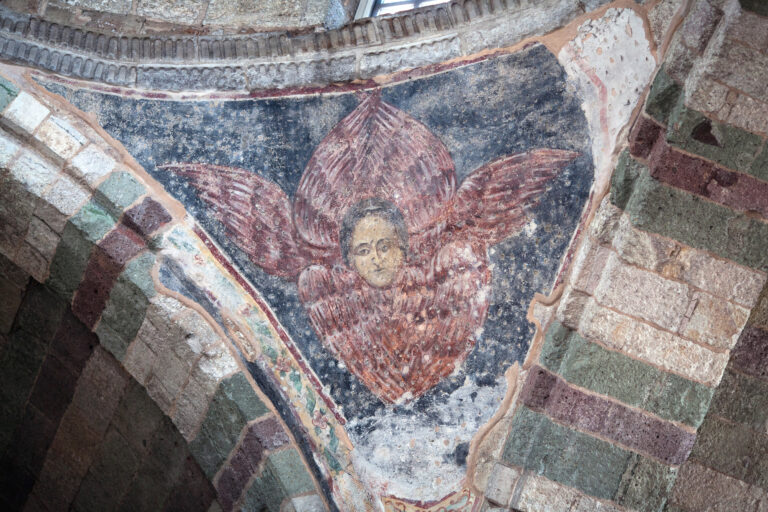A recent ad on X (formerly Twitter) promoted a tweet by the “Apostle John Welty” (if you doubt his apostleship, know his account is verified with a blue check). He himself was promoting teachings by another, who calls himself the “Apostle Eric Vonanderseck.” Vonanderseck’s work is about an ancient book, 1 Enoch, which is popularly referred to simply as the “book of Enoch.” Vonanderseck uses 1 Enoch to promote a supposed timeline about the end of time, suggesting that 1 Enoch provides answers about such things as human DNA, cattle mutilations, and alien abductions.[1] Whatever one thinks about the rest of Welty’s tweet, it does make one true statement: there is “renewed interest in the book of Enoch.”
So, what is the book of Enoch? Where did it come from, and why is there such a renewed interest in this book?
The Book of Enoch, which we’ll call 1 Enoch, to distinguish it from other works that make use of Enoch traditions, is a 108-chapter work composed between the third to the first centuries B.C. The work contains strange visions—of angels (sometimes called “watchers”), demons, animals, Enoch, Noah, astronomy, the flood, the Jewish calendar, and much more.
“There is renewed interest in the book of Enoch.”
1 Enoch belongs to the genre of apocalyptic literature—that is, highly imagistic prophecy characterized by visions, the cosmic battle between good and evil, spiritual warfare playing out in the physical world, dramatic warnings about judgment, and an emphasis on the need to remain faithful. Apocalyptic literature recontextualizes the contemporary situation into the bigger picture of God’s battle against evil, borrowing from the vivid and grand imagery of such books as Daniel and Ezekiel.
This apocalyptic character of 1 Enoch has made the book a sensation in recent years, though the book is actually not as mysterious as it might appear. Instead of focusing on alien abductions, 1 Enoch is actually a highly imagistic warning about the need for Jews to abstain from assimilation with pagans, a major crisis during the Hellenistic period. This theme is the same as the underlying theme of much of the Apocrypha, as we have already seen.
1 Enoch is not in the Apocrypha, nor is it in the canons of the Orthodox, Catholic, or Protestant Bibles. It was never in the Septuagint or in the Hebrew Bible. But the book does come from the same time frame as the Apocrypha, and it had a wide influence in its day. And, strangely, the book is included in the canon of a small sect of Christianity—the Ethiopian and Eritrean Tewahedo Church, which also includes the Apocrypha and several other Intertestamental works. And, even more strangely, 1 Enoch is quoted by the New Testament book of Jude.
“1 Enoch is quoted by the New Testament book of Jude.”
Date, Genre, and Language
1 Enoch was composed sometime between the third and the first centuries B.C., though it is difficult to give an exact date, because the work appears to be a composite of several smaller works most likely from different authors and periods. We know that parts of 1 Enoch were written before 100 B.C., because fragments of 1 Enoch are found among the Dead Sea Scrolls. Further, the book seems to have been fairly well known by the first century A.D., meaning 1 Enoch must have been around for a while. Again, it is safe to conclude that 1 Enoch was written between the third and first centuries B.C., probably in stages.
1 Enoch is not in the Septuagint, which is why it is not considered part of the Apocrypha. Instead, it is part of what’s called the pseudepigrapha, a word meaning “false writings.” The pseudepigrapha are writings from the third century B.C. to the fourth century A.D. about biblical themes and often falsely attributed to a biblical character. Works about Old Testament subjects are called Old Testament pseudepigrapha, and works about New Testament subjects are called New Testament pseudepigrapha. Many of the pseudepigraphal works were well known in their time, but typically, they were never considered canonical, either by the mainstream Jews or by the mainstream church.
1 Enoch was written in a Semitic language, either Aramaic or Hebrew. It’s not clear which. The most complete copies of 1 Enoch we have today are copies in the Ge’ez language of Ethiopia, which itself is a Semitic language. Modern translations of 1 Enoch come from the fragments we have from various sources, but especially from these Ethiopian texts.
“The pseudepigrapha are writings from the third century B.C. to the fourth century A.D. about biblical themes and often falsely attributed to a biblical character.”
Contemporary Interest
Though 1 Enoch was well known in its day, by the Middle Ages the book was largely forgotten by both Jews and Christians, surviving only in Ethiopia and in Europe, in a few nearly forgotten manuscripts. The book came to the consciousness of Europeans and Americans when several ancient manuscripts were translated into European languages in the nineteenth century. By the twentieth century, 1 Enoch was being studied in the universities as an example of ancient Jewish apocalyptic literature.
Since the explosion of social media, YouTube, and podcasts, 1 Enoch has been subject to many studies, a lot of which have been misguided and often unhinged. This is because Enoch contains mystical visions of such things as angels, giants, evil spirits, and strange cosmological emphases—all of which sensationalists and conspiracy theorists love. Contrary to the more exotic interpretations of 1 Enoch, however, the book does have a historical purpose: it is an apocalyptic vision of what happens when Jews, especially Jewish leaders, capitulate to pagan culture.
“It is an apocalyptic vision of what happens when Jews, especially Jewish leaders, capitulate to pagan culture.”
The Purpose of 1 Enoch
So how does 1 Enoch develop its story?
1 Enoch uses the brief narrative in Genesis 6:1-5 about the “sons of God” having sexual relations with the “daughters of men” as an allegory to describe the apostasy of the Jews who were selling out to the Greeks during the Hellenistic period. In 1 Enoch, the “sons of God” represent the Jews of the Second Temple Period[2], and the “daughters of men” represent the pagan Greeks.
Enoch is especially concerned with the Jerusalem priests, many of whom were deeply compromised. For a faithful Jew to see the Jewish priesthood bend the knee to Hellenism—with its idolatry, its impurities, and its disgusting immorality—was so infuriating that only an apocalyptic vision would suffice. So, in Enoch’s visions, the fallen angels bear the imagery, roles, and titles that correspond to the temple priesthood. 1 Enoch is essentially the Second Temple period’s Animal Farm. What George Orwell did as an allegory to warn people about communism, 1 Enoch did to warn about Hellenism.
[1] Vonanderseck, The Book of Enoch: The Full Report, https://www.s8wministries.org/direct-downloads/book-of-enoch-report.pdf.
[2] The term Second Temple period refers to the six centuries after the restoration of the Temple under Ezra (c. 516 B.C.) up to its destruction by Rome (A.D. 70).












